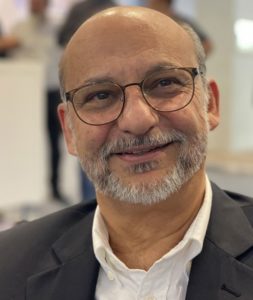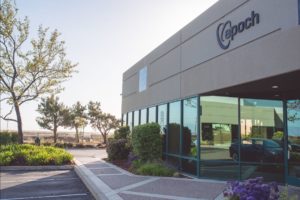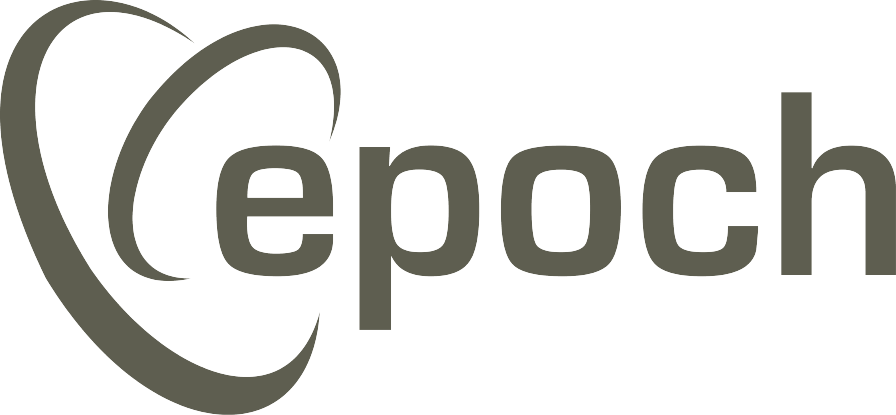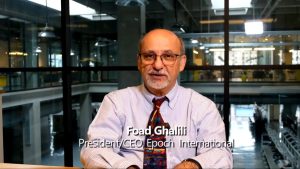Interview by Barry Matties from I-CONNECT007
(This interview first appeared in the February 2020 issue of SMT007 Magazine.)

Epoch International is an EMS company specializing in front-end engineering. Barry Matties speaks with Epoch President Foad Ghalili at Productronica 2019 about the company’s ability to maintain low employee turnover, challenges they’re facing, and expected growth in the U.S. market.
Barry Matties: Foad, we’re in Munich right now, but where is your headquarters located?
Foad Ghalili: Our headquarters is in Fremont, California, and we have other facilities around the world, including Dalian, China.
Matties: Talk a little bit about what you do.
Ghalili: Epoch is an engineering services manufacturing company. We put a lot of emphasis on front-end engineering. Most of the customers that we work with are looking for IP protection, and that also gives us leverage to bring about socially responsible companies because I think they are interlinked.
You cannot segregate IP from socially responsible companies, so that is one of the areas where we’re strong. We’ve been at the forefront of that industry. We are working with large corporations where IP becomes a key element for them. At our company, we have had zero turnover on our manufacturing floor. In the entire company, we have about 4% turnover, which dictates how we run the operation. That gives you an idea of our company culture and environment.
Matties: For reference, how many people are in your organization?
Ghalili: We have 150 people in China and about 10–15 running the Fremont operations. We bring value to the employees because the company shares its profit. About 25% of the profits are distributed with the employees. They have free education. For example, our production manager started as a technical high school employee on a production floor. She now has her MBA degree through the company, and she’s running our production department. We have a lot of those stories where employees have grown with the company and have been able to bring a lot of value to the organization.
Matties: Are you the founder of the company?
Ghalili: I am one of the founders. The company celebrated its 25th year anniversary last year.
Matties: Congratulations. So, the culture is based on your values.
Ghalili: That’s right.
Matties: In China, there’s a culture that may not be congruent with what you’re discussing.
Ghalili: Exactly. Again, when I first went to China, I was a general manager of a joint venture company in China running a ceramic chip capacitor, and I’ve always thought that we need to bring in different companies that bring value to society; I felt that would be an area to begin with. In those days, many of the foreign companies thought, “How can we bring products so that we feel confident that our IPs are protected?” Then, we asked, “How can we bring a foreign company that does not abuse the labor force and use them only for their labor to produce a product?” We were able to marry these two concepts together and bring that force into Dalian.
Matties: That’s good for the region as a model for others as well. We know during Chinese New Year, most companies lose a large or a percentage of employees, and that’s a big problem. As you know, it creates an interruption in fabrication services.
Ghalili: Exactly. In a discussion with one of our customers, they mentioned that every time after the New Year, they go through completely retraining their employees at their other contract manufacturing site. However, with us, they have worked with the same employees for the past 10 years, so they can continue building on the past experience.
Matties: You described it as an EMS company with a front-end engineering strength.
Ghalili: Exactly. We have 40% of our employees on the manufacturing floor, and 60% are on the front-end. We have 30–35 R&D engineers involved in the design development phase. Then, you have our quality, supply chain, and other staff, many of them with engineering degrees. We are heavy in the front-end, going into manufacturing.
Matties: In manufacturing, one of the highest costs has been around labor, and we’ve seen labor prices increase in China, so we see a lot more of the digital factory. How are you responding to the digital factory?
Ghalili: Our engineering R&D people are starting to implement some of these digital concepts. Our hope is to grow but not necessarily add labor to the operation. In the past 25 years, we’ve never had a layoff because of lack of work. We want to continue on the same path and not reduce our labor force as we are growing into the digital environment; instead, we want to use the same labor force and move them up the value chain. They’re going to perform these higher-end value production through the constant training we provide to them.
Matties: Your values toward education easily fit with that philosophy. Because you’re exactly right that you can grow and retain the people that you have, which is great. What’s the greatest challenge in your business?
Ghalili: Our greatest challenge is bringing these concepts to the customers and other people. Many people look at the hard, mechanical, tangible, or build value.
Matties: You’re talking about the intellectual or social value.
Ghalili: Yes. Those things are hard to quantify or put finances to. Again, one of our challenges has been, “How do we educate our customers, suppliers, and the whole chain that there is a value to what we are bringing into the work environment?”
Matties: For many, it’s about the bottom-line dollar, though.
Ghalili: Exactly. People don’t see that in reality, it also brings financial value when you don’t have that turnover, when you’re not going through constant reeducation, and when you don’t have the quality problems because of these turnovers. Somehow, people cannot look at these values from a financial perspective.
 Matties: But what you’re selling is stability, and when you have stability in your supply chain, you have a better supply chain. What type of customers do you primarily deal with?
Matties: But what you’re selling is stability, and when you have stability in your supply chain, you have a better supply chain. What type of customers do you primarily deal with?
Ghalili: We deal heavily with customers looking for IP and front-end engineering needs.
Matties: Are there any market segments that you’re specializing in, or is it across the spectrum?
Ghalili: We are not involved in the low-end market. We mostly do products that bring high-end value to the customers. We do a lot of test boxes on the systems that are business-to-business products.
Matties: There’s a regional trend going on in manufacturing: build it where you need it. As we see labor costs being eliminated in operation, we’re realizing that factories can be built anywhere, especially on the assembly box build side. With the amount of work that you’re producing in China, how much of it is being exported, and how much is being retained domestically?
Ghalili: Right now, 85–90% is shipped in China, and 10–15% is exported.
Matties: Are you happy with that mix?
Ghalili: We’re fine with that. Our long-term objective, again, is to build it in the region for the region. I do not understand why we are wasting resources shipping goods from one part of the world to the other part. For me, energy efficiency and environmental impact are bigger issues than anything else.
Matties: Fuel, energy, and time are all major factors. When you look at the U.S., how do you see the market? With the shift in politics and tariffs, is there more opportunity for you now?
Ghalili: Definitely. The U.S. market is strong because of various cultural integration. The strength of the U.S. is its diversity, and that’s what brings its R&D expertise. I think manufacturing will grow in the U.S. and the type of manufacturing will not be what we are thinking of today; the mode of manufacturing is changing, irrespective of what the political situation is.
Matties: If we can drive cost out, that’s where opportunity exists. What about supply chain management? We know that we’ve had some supply shortages in the recent past, but it sounds like those have been smoothed out.
Ghalili: Again, I think the U.S. is also going through its learning curve from infrastructure to manufacturing, especially in electronics. That manufacturing infrastructure is much stronger in China. No matter what you say, they have been doing this for the past 15–20 years. The infrastructure is starting to build again in the U.S. Again, my personal feeling is it has nothing to do with politics, and it’s going to take some time for it to build U.S. manufacturing infrastructure, especially in the supply chain. Today, we build parts in the U.S., but we bring the fab from China. This has to shift at one point, so these are the areas that still need to go through the process of change.
Matties: You mentioned the politics of it, but in business, what we have to do is react to the situation; it doesn’t matter what it is, but we have to be smart in that circumstance.
Ghalili: Correct.
Matties: Where is your business headed?
Ghalili: We see growth in the United States, and long term, we see our growth in India. Once the fundamentals are built in the U.S., the next market for us is to set up manufacturing facilities in India. Again, this is a reality. When you look at the population of the world, it’s China, India, and of course, the United States with all of North America, so those would be our next areas of growth.
Matties: Foad, it has been great meeting you, and I appreciate your time and insights. Thank you very much.
Ghalili: Thank you. SMT007
The above interview is taken SMT007 Magazine. The original can be accessed in the February 2020 issue of the magazine.


